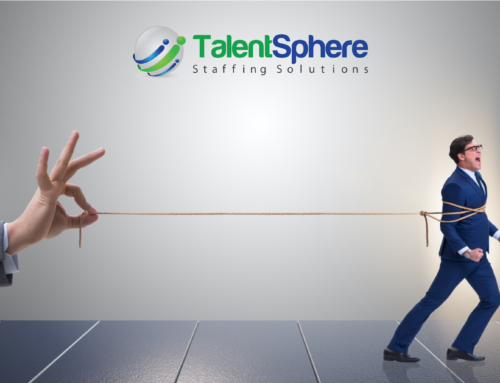Offices everywhere are full of eager employees poised for fresh starts! There is recharged enthusiasm for conquering previously unconquerable projects. Time with family and friends has allowed for the creation of elaborate dreams to assist in the accomplishment of elaborate goals. In corporations around the world, the New Year brings a revived optimism for all of mankind.
Amongst all this joy and good cheer looms a rarely talked about issue that can wreak havoc on an organization…there are two times per year when individuals ponder the concept of a career change. One of those times?You guessed it. The New Year.
The War for Talent
In most industries, the days of the Gold Rolex for 25 years of service have come to an end. Hoping your employees will stay with your organization out of sheer loyalty or to prove a resolute amount of intestinal fortitude is no longer the key to retaining the vital leaders within your team (or the future leaders waiting-in-the-wings). The war for top talent has created a pendulum effect that fluctuates between a candidate-driven and an employer-driven marketplace. Despite this pendulum, there are organizations that consistently secure and retain the best and the brightest and create a thriving culture that engages, enriches, and fulfills the employees within their walls. Coincidentally, these organizations are some of the most successful. They have chosen to make a “culture of retention” a priority and to develop programs and initiatives that promote this core belief.
Whether you have just recently hired an essential player on your team or are dedicated to retaining the current team you have, the following are just three out of dozens of best practices that TalentSphere has gathered from partnering and studying great organizations and great leaders around the world. Simply put – we know why individuals leave organizations, and we know why individuals will likely never leave an organization. We can provide additional insights and suggestions regarding your own culture and are ready to assist in design and implementation; please do not hesitate to contact us.Clear and Quantifiable Career Paths
Seems relatively straightforward, right? Ask an individual what his or her next step is in their career, and they’ll more than likely share with you the specific title that is one rank above where they are currently. However, what would their answers be to questions like the following:- What is your organization doing proactively to get you to that next step, or to train and equip you with the skills necessary to excel in that future role?
- Has the company outlined exactly what you need to do in order to take that next step? Do you think those are realistic milestones?
- What skill set, or sets, separate you from the individual you report to? Are you capable of filling those shoes? In what areas do you need additional experience in order to be qualified for that role?
Invite your key employees to proactively play a role in the development of their careers – as opposed to sitting back and patiently waiting for someone else to train them, promote them, and shape their futures. Think about the critical members of the team; the more difficult an employee is to replace, the more dedicated the effort should be to challenge, inspire, and lead that individual’s development.
Now, what if a next step does not exist? What if an individual truly is limited by the available layers above them? Do not wait for that realization to come to them; be creative in offering alternative paths, or innovative challenges, or new responsibilities. Most people do not realize the circumstances prohibiting them from career advancement – until they do.Consistent Reviews and Feedback
The end of the year is commonly associated with reviews and (possible) financial raises. Because these two seem to go hand-in-hand, most employees sitting through an evaluation are probably thinking “How is this review going and how does it impact the bonus or raise that I believe I deserve?” They tend to be focused more on the financial implications of the feedback than the feedback itself. In addition to separating these two events, consider shifting the entire dynamic of the evaluation process.Instead of sharing immediate feedback, consider seeking first to understand that individual’s perspective.
- How do you feel about your progress to date? Are you where you thought you would be?
- How have your responsibilities changed and evolved as you’ve grown in this past year, as opposed to a year ago? What are you taking on now, that you weren’t able to previously?





